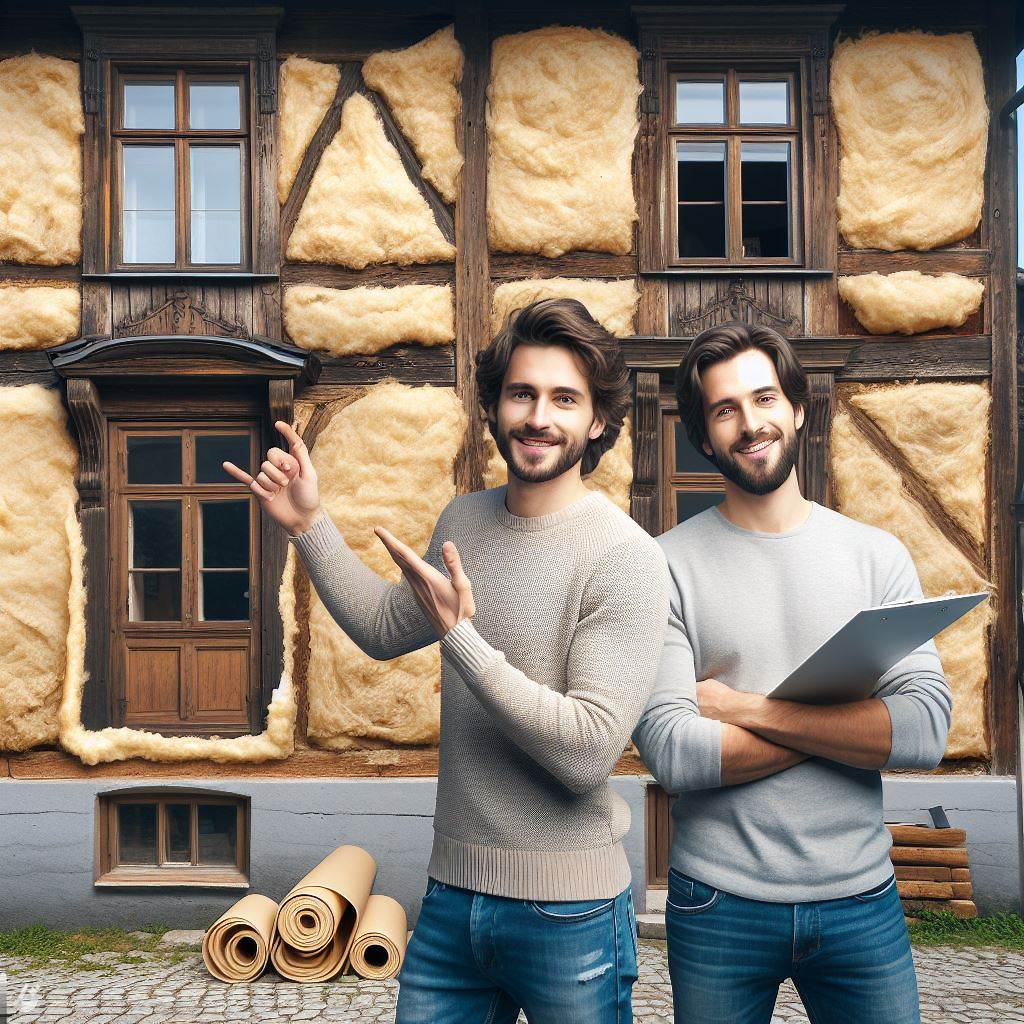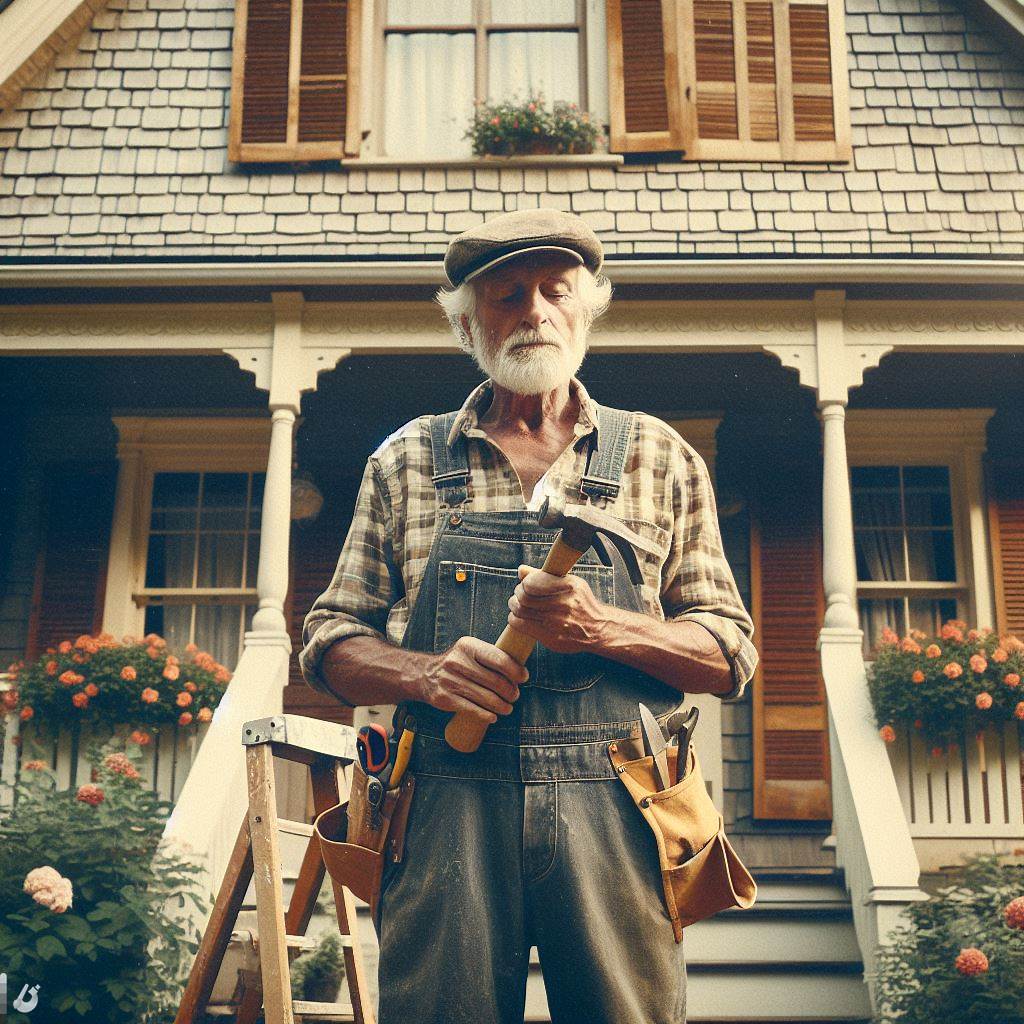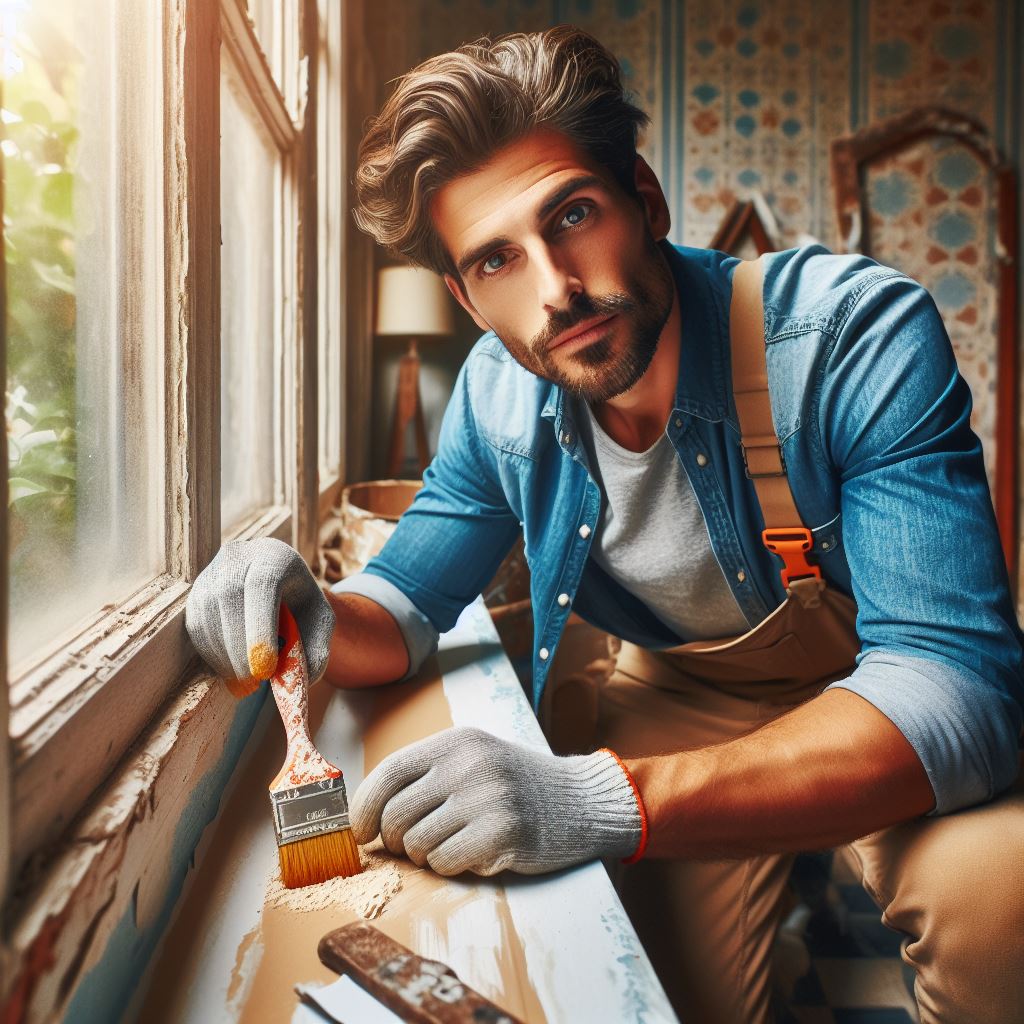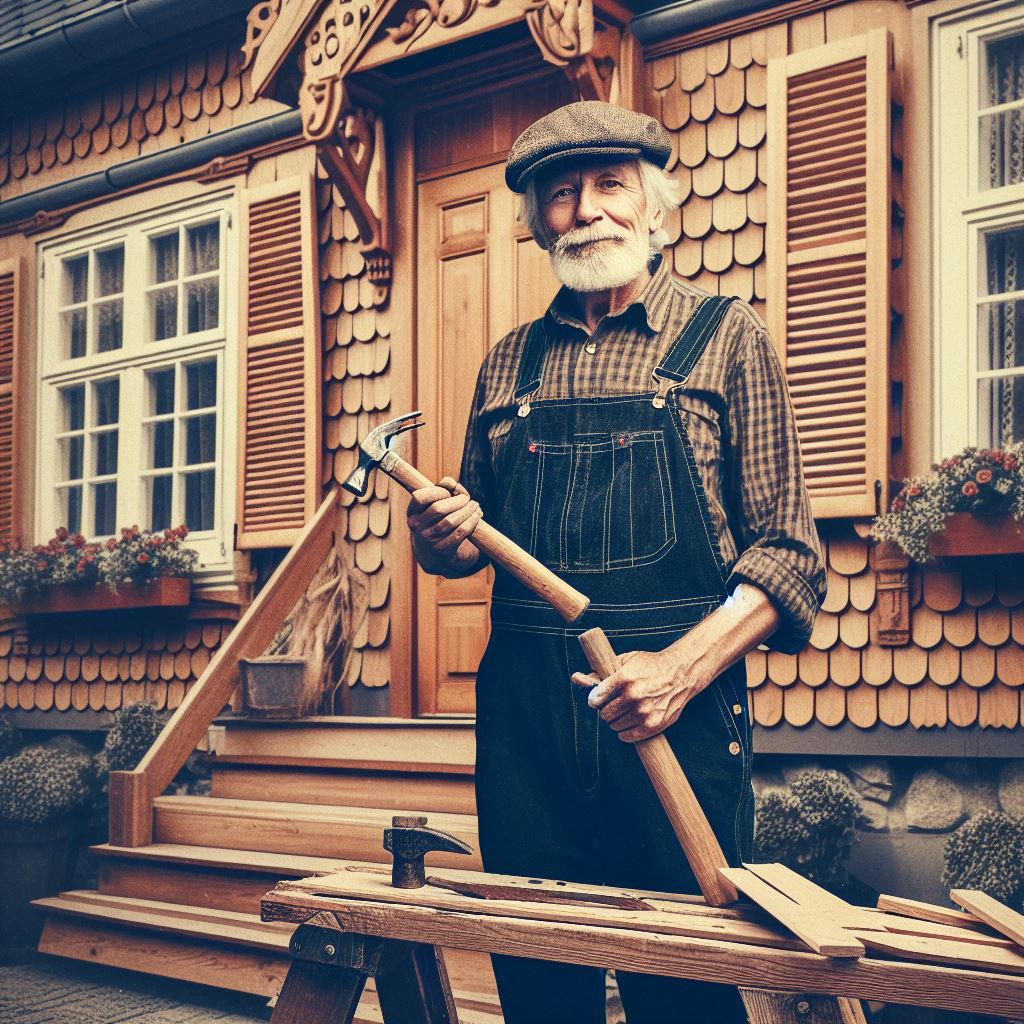Introduction
Old houses, with their vintage allure, often grapple with issues of energy inefficiency and discomfort owing to outdated insulation methods.
To breathe new life into these historical abodes and transform them into cozy, energy-efficient havens, it becomes imperative to address the unique insulation challenges they present.
Embark on an exploration of the astonishing reality that a considerable chunk of your hard-earned money spent on heating and cooling may be slipping through the cracks of poorly insulated walls.
As we embark on this journey to unravel the mysteries of effective insulation in old houses, we not only unlock potential cost savings but also ensure the preservation of the historical charm and character that make these homes so beloved.
Understanding Old House Insulation
Challenges and Unique Characteristics of Old House Insulation
Understanding the challenges and characteristics of old house insulation is essential for homeowners looking to improve their home’s energy efficiency and comfort.
Older homes come with unique insulation issues that require careful consideration and specialized solutions.
One of the main challenges of old house insulation is the age of the materials used.
Many older homes were built before modern insulation standards were established, leading to inadequate or inefficient insulation.
This lack of insulation can result in higher energy bills, uncomfortable living conditions, and an increased carbon footprint.
Additionally, old houses often lack a vapor barrier, which is a protective layer that prevents moisture from entering the walls.
Without a vapor barrier, moisture can seep into the insulation, leading to mold growth, rotting joists, and compromised structural integrity.
Moisture issues are especially common in basements and crawlspaces of older homes.
Another characteristic of old house insulation is the presence of hazardous materials like asbestos.
Asbestos was commonly used in insulation products until its health risks were discovered.
Removing asbestos insulation requires professional assistance to avoid releasing harmful fibers into the air.
Common Insulation Materials Used in Older Homes
Common insulation materials found in older homes include fiberglass, cellulose, and rock wool.
Fiberglass insulation, made of tiny glass fibers, was widely used due to its cost-effectiveness.
Similarly, cellulose insulation, made from recycled paper or plant fibers, provided an eco-friendly option.
Rock wool insulation gained popularity for its fire-resistant properties and durability.
Limitations and Issues Associated with Old Insulation
However, as insulation ages, it can deteriorate and lose its effectiveness.
Over time, old insulation materials can compress, sag, or become infested by pests, resulting in reduced insulation performance.
Moisture problems can further accelerate the deterioration of old insulation, leading to the growth of mold and mildew.
Furthermore, gaps and air leaks in old insulation can significantly reduce its effectiveness.
These gaps can be caused by settling of the building, poor installation, or changes in the structure over time.
Addressing these gaps is crucial for improving the energy efficiency of old house insulation.
In fact, understanding the challenges and characteristics of old house insulation is vital for homeowners seeking to enhance the energy efficiency and comfort of their homes.
By addressing the limitations and issues associated with old insulation and choosing appropriate materials and insulation techniques, homeowners can improve the insulation performance of their older homes and create a more sustainable and comfortable living environment.
Read: Negotiating Deals: Top Tips for Real Estate
Assessing Insulation Needs
Importance of assessing the insulation needs of an old house
Assessing the insulation needs of an old house is crucial for energy efficiency and comfort.
It helps identify areas where insulation may be lacking or deteriorating, leading to higher energy bills.
This assessment ensures that the right insulation materials are used and installed correctly, maximizing effectiveness.
Common signs of inadequate or deteriorating insulation
High energy bills, fluctuating indoor temperatures, and drafts are common signs of inadequate insulation.
Cold or hot spots in certain areas of the house, condensation on windows, and excessive noise can also indicate insulation problems.
Deteriorating insulation may show signs of wear and tear such as sagging, settling, or crumbling insulation material.
How to conduct a thorough insulation inspection
Start by examining the attic, as it is often the primary source of heat loss in old houses.
Check for gaps, cracks, or openings in the walls, ceilings, floors, and around windows and doors.
Inspect the basement and crawl spaces, as these areas can greatly affect the overall insulation of the house.
Look for any signs of moisture, mold, or pest infestation, as these can compromise insulation quality.
Consider hiring a professional energy auditor for a comprehensive inspection and to identify insulation needs.
In essence, assessing the insulation needs of an old house is essential for energy efficiency and comfort.
Identifying inadequate or deteriorating insulation through signs and thorough inspections allows for proper insulation improvements.
By addressing these needs, homeowners can reduce energy costs, improve indoor comfort, and increase the lifespan of their old house.
Read: Preserving Character in Home Remodels
Best Practices for Old House Insulation
The Importance of Air Sealing Before Adding Insulation
Air sealing is a crucial step in old house insulation as it prevents energy loss and increases efficiency.
By eliminating air leaks, you can improve indoor air quality and reduce heating and cooling costs.
Common air leakage areas in old houses include windows, doors, gaps around pipes, and electrical outlets.
Sealing these gaps with weatherstripping, caulk, or foam insulation can significantly improve your home’s insulation.
Hiring a professional energy auditor can help you identify areas that require air sealing for maximum efficiency.
Different Insulation Options Suitable for Old Houses
Fiberglass Insulation
Fiberglass insulation is a popular choice due to its affordability and relatively easy installation process.
This type of insulation comes in rolls or batts and can be installed in walls, attics, and crawl spaces.
It is important to wear protective clothing, including gloves and a mask, when installing fiberglass insulation.
Consult an expert to determine the appropriate R-value for your old house, ensuring optimal thermal resistance.
Spray Foam Insulation
Spray foam insulation is an excellent option for filling gaps and hard-to-reach areas in old houses.
It provides an air-tight seal, preventing air leakage and enhancing the overall insulation performance.
Professional installation is recommended for spray foam insulation due to its precise application requirements.
Choose between closed-cell or open-cell spray foam based on your insulation needs and budget.
Cellulose Insulation
Cellulose insulation is made from recycled paper and treated with fire-retardant chemicals.
It is an environmentally friendly option that can be blown-in to fill wall cavities, attics, and floors.
Ensure proper installation of cellulose insulation to avoid settling and achieve consistent thermal performance.
Consider hiring a qualified contractor who specializes in cellulose insulation installation to guarantee quality work.
Reflective Insulation
Reflective insulation is often used in hot climates to reduce heat transfer through radiation.
It consists of a reflective foil material that reflects radiant heat, keeping your home cool in the summer.
When installing reflective insulation, it is crucial to properly seal all seams and overlaps to maximize effectiveness.
Consult local building codes and regulations to ensure compliance and determine the appropriate installation method.
Tips for Proper Installation Techniques
Before insulation installation, make sure your old house is dry and has no existing moisture issues.
Clean the areas where insulation will be placed, removing dust, debris, and any potential contaminants.
Wear appropriate protective gear such as gloves, goggles, and masks to prevent skin irritation and inhalation of particles.
Follow manufacturer instructions and guidelines for installing each type of insulation to achieve desired results.
Consider hiring an insulation professional for complex installations or if you are unsure about DIY techniques.
Regularly check the insulation for signs of damage or deterioration and address any issues promptly.
Insulation plays a vital role in maintaining a comfortable and energy-efficient old house.
By prioritizing air sealing, choosing the right insulation, and ensuring proper installation, you can enhance your home’s insulation performance and reduce energy costs.
If you’re uncertain about the best practices for your specific old house, consult with a professional insulation contractor for personalized recommendations.
Read: Real Estate: Crafting Winning Deal Strategies

Focus Areas for Insulation Improvement
Improving insulation in an old house is essential for energy efficiency, comfort, and cost savings.
By focusing on specific areas, such as the attic, walls, basement/crawl space, windows, and doors, homeowners can achieve optimal insulation and thermal performance.
Attic Insulation
Your attic is one of the primary areas where heat can escape or enter your home. To ensure effective insulation:
- Choose quality insulation materials, such as fiberglass, cellulose, or spray foam.
- Ensure the recommended insulation thickness is met to prevent heat transfer.
- Proper attic ventilation is crucial to prevent moisture buildup and maintain insulation efficiency.
Wall Insulation
Old houses may have different types of walls, and insulation techniques can vary. Consider the following:
- For solid masonry walls, internal insulation might be suitable, but external insulation can be more effective.
- External insulation can preserve the historic charm while providing excellent thermal performance.
- Insulating walls without damaging historic features can be achieved by using specialized techniques and materials.
Basement/Crawl Space Insulation
Basements and crawl spaces are often overlooked areas for insulation, but they play a significant role:
- Insulating basements and crawl spaces can improve energy efficiency and prevent moisture issues.
- Challenges like moisture, air leakage, and pests can be addressed through proper insulation techniques.
Windows and Door Insulation
Windows and doors are common points of heat loss or gain. Enhance their insulation by:
- Using weatherstripping and caulking to seal gaps around windows and doors.
- Consider upgrading to energy-efficient windows and doors with double or triple glazing.
- Install window film or thermal curtains to further enhance insulation and reduce drafts.
Remember, proper insulation in all focus areas can significantly improve the energy efficiency of an old house while preserving its historic charm.
Read: Eco-Friendly Upgrades for Old Houses
Hiring Professionals vs. DIY
Pros and Cons of Hiring Professionals for Old House Insulation
Pros
- Expertise: Professionals have the necessary knowledge and experience to do the job correctly.
- Quality Results: Hiring professionals ensures a higher quality of insulation installation.
- Time and Effort: Professionals can complete the job faster and with less effort on your part.
- Insurance Coverage: Reputable professionals often provide insurance coverage for any potential damages.
Cons
- Cost: Hiring professionals can be expensive, especially for extensive insulation projects.
- Limited Control: You have less control over the process and materials used when hiring professionals.
- Scheduling: Depending on availability, you may need to wait for professionals to start the project.
When to Consider DIY Insulation Projects
While hiring professionals is often recommended for old house insulation, there are certain situations where DIY projects may be suitable.
Consider the following factors:
- Size and Complexity: If the insulation project is small and straightforward, you may be able to handle it yourself.
- Cost: DIY insulation projects can help save money, especially if you have the necessary tools and materials.
- Experience and Skills: Do you have previous experience or the necessary skills to tackle insulation installation?
- Time Availability: DIY projects require time and effort, so consider your availability before taking on the task.
The Importance of Safety and Following Proper Techniques
Whether you choose to hire professionals or opt for a DIY insulation project, safety should always be a top priority. Follow these important safety guidelines:
- Protective Gear: Always wear appropriate safety gear, such as gloves, goggles, and dust masks.
- Proper Ventilation: Ensure the area being insulated is adequately ventilated to avoid respiratory issues.
- Electrical Precautions: Take necessary precautions when dealing with electrical connections near insulation materials.
- Material Handling: Be cautious when handling insulation materials, as some can cause itching or skin irritations.
- Fire Safety: Use fire-retardant insulation materials when insulating vulnerable areas to reduce fire risks.
In addition to safety, following proper techniques is crucial for effective insulation. Consider the following:
- Research and Planning: Familiarize yourself with proper insulation techniques and materials suitable for your old house.
- Sealing Air Leaks: Identify and seal any air leaks in the building envelope before installing insulation.
- Proper Installation: Follow instructions and guidelines from product manufacturers for correct insulation installation.
- Energy Efficiency: Insulate key areas like attics, walls, and floors to maximize energy efficiency and reduce utility bills.
- Regular Maintenance: Inspect and maintain insulation periodically to ensure its effectiveness over time.
Ultimately, the decision to hire professionals or embark on a DIY insulation project depends on various factors, including budget, time, and expertise.
Evaluate your circumstances carefully to make the best choice for your old house’s insulation needs.
Conclusion
Summarizing Key Points
We’ve explored crucial insights for enhancing old house insulation.
We delved into efficient materials, emphasized the significance of sealing gaps, and underscored the importance of assessing existing insulation.
Upgrading insulation isn’t just about warmth—it’s a strategic move to slash energy bills and reduce environmental impact.
Properly insulated homes maintain a comfortable temperature year-round, promoting energy efficiency.
We addressed common pitfalls, stressing the need for uniform insulation and the role of professional assessments.
DIY enthusiasts can tackle minor improvements, but consulting experts ensures comprehensive solutions.
Encouraging Action
Now, it’s time for action. Assess your home, identify weak points, and embark on a journey to bolster insulation.
Small changes yield significant results; start with weather stripping, then move on to insulating attics and walls.
Empower yourself with knowledge. Understand insulation R-values, choose materials wisely, and embrace modern technology like smart thermostats.
Your investment will yield long-term savings and contribute to a greener, more sustainable future.
Spread the word—share this knowledge with friends and family.
The more people embrace proper insulation practices, the greater our collective impact on energy conservation and emission reduction.
Closing Thoughts
Your old house can transform into an energy-efficient haven. Seize this opportunity to make a positive impact on your wallet and the environment.
By taking action today, you’re not just insulating your home; you’re contributing to a more sustainable tomorrow.
Embrace the warmth, both in your abode and in your commitment to a greener, eco-friendly lifestyle. Insulate, save, and thrive!




